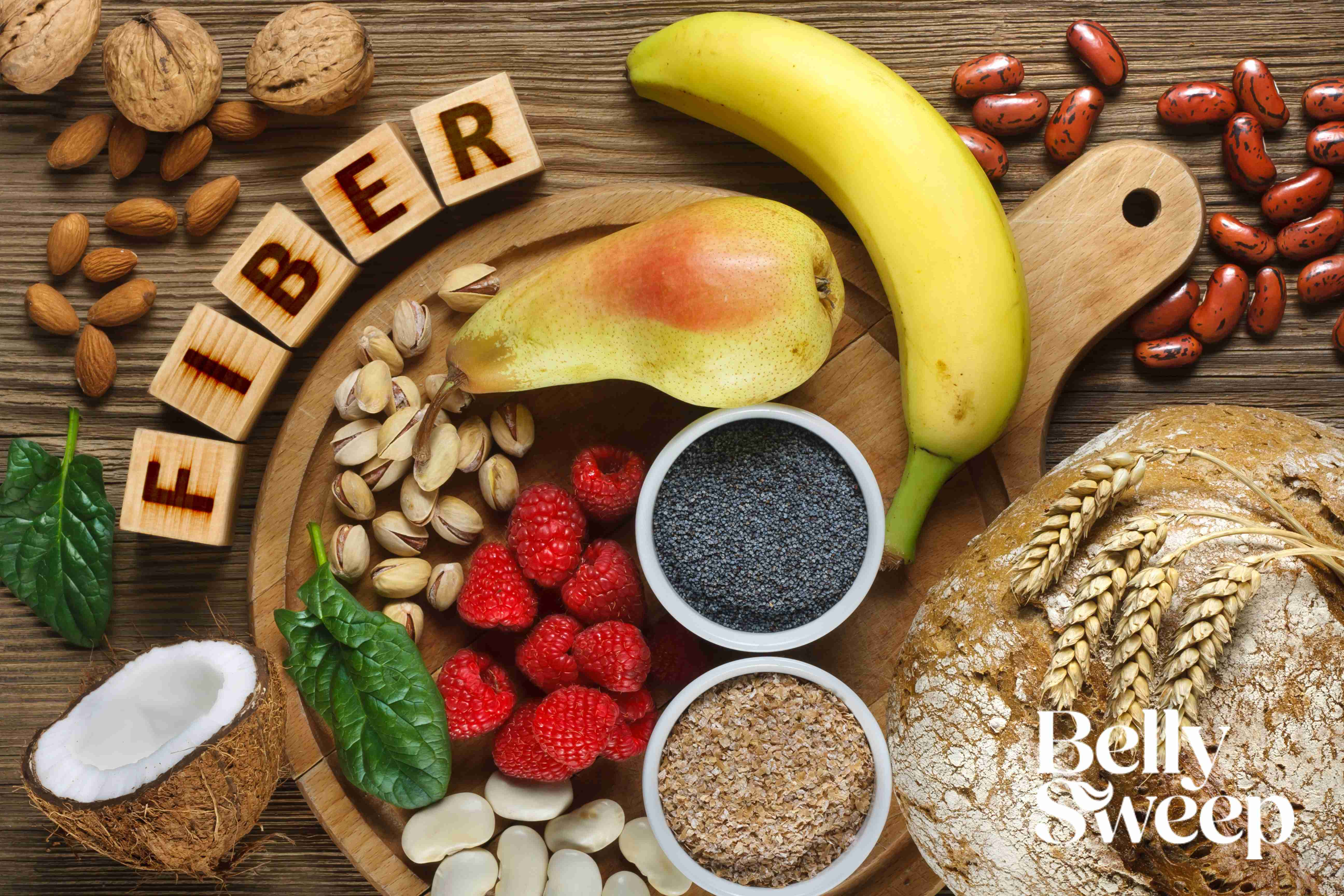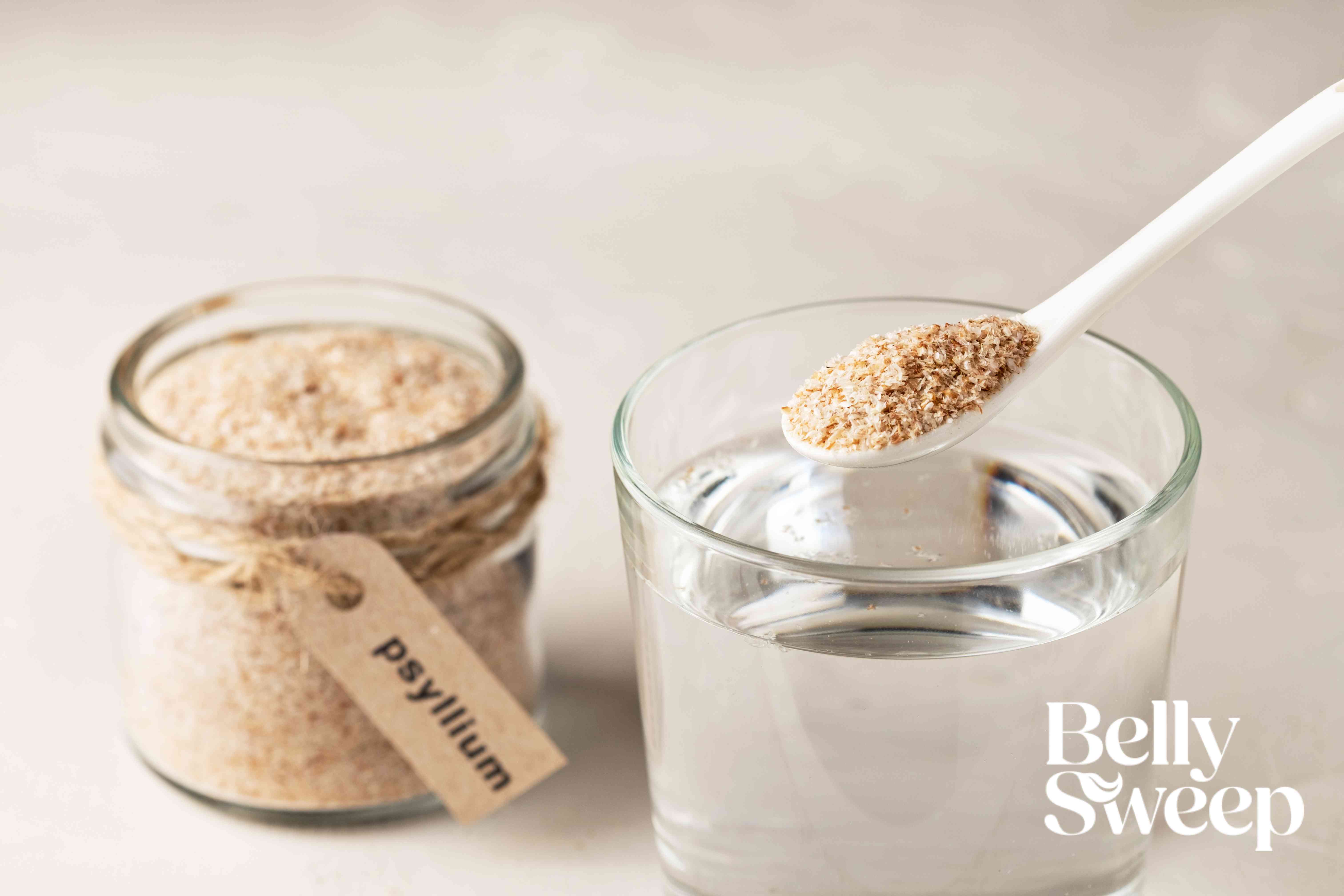How Many Grams of Fiber per Day? Guidelines for Optimal Health
Are you searching for a way to feel better in body and mind that’s 100% science-driven? The good news is that you’ve landed in the right place.
In an age where wellness ‘experts’ seem to be pushing supplements, meal plans, and training routines everywhere you look, what you need to do is reconnect with nature. We’re going to show you how to do it by giving your body the correct amount of dietary fiber so you can experience a whole host of benefits.
Dietary fiber is nature’s way of making sure you can enjoy everything from good heart health and healthy weight loss to optimal digestion and regular bowel movements. Without it, you can be left feeling bloated, suffering from reduced nutritional uptake, and stressed due to high blood pressure. A dietary fiber imbalance can even send your body on rapid sugar highs and lows if you are not careful.
In this easy-to-follow guide, we’re going to talk you through science-backed daily fiber recommendations so that you know precisely how many grams of fiber per day you need. We’ll even highlight the key foods that act as a good source of fiber so that you can start living a healthier, happier life before you know it.
Let’s dive right in!
Understanding Dietary Fiber and Its Role in Your Health
When you start understanding dietary fiber and the role it plays in your body, you start to see how important supplementation could be to achieving optimal health. But what is dietary fiber?
Fiber is largely made up of special carbohydrates that are found in natural plant compounds, such as cellular walls. Fruit, veg, and wholegrain cereals are all good choices if you’re looking for an everyday high-fiber food to add to your diet.
The important thing to note about fiber is that very little of it will be broken down as it passes through your digestive system. For this reason, you can think of it as a natural workout for your gut that will help maintain balance in your body.
Are there different types of fiber?
Yes, fiber can be split into two main categories: soluble and insoluble. Knowing how many grams of fiber per day your body needs is only possible when you understand the difference between these two categories.
Soluble fiber improves overall health by feeding your gut flora — the good bacteria that live in your gut, make digestion possible, and boost your immune response. Insoluble fiber is typically avoided in processed foods as it contains substances such as physic acid. Your body needs both types of fiber to stay healthy.
What are the health benefits of fiber?
Any food that is a good source of fiber will help you achieve the following improvements in your life the natural way:
- Dietary fiber supports gut health so that you can enjoy optimal nutrient uptake, reduced bloating, and far less frequent constipation
- The correct amount of fiber in your diet will also lower your cholesterol levels and blood pressure because it supports a healthy heart
- You will also be able to control your blood sugar levels the natural way and manage your weight over the long term by controlling your appetite
Excited by what you’ve read and want to know how many grams of fiber per day your body needs? We’re going to cover this burning question in the next section.
Fiber – how much is enough?
A quick look at the FDA guidelines shows that 28 grams of fiber a day is optimal if you are on a 2,000-calorie diet. This amount then scales linearly with the total calorie intake you need for your body type. It’s also really important to note that age and sex will play important factors in determining the precise amount of fiber your body needs.
Looking for a little more detail on how many grams of fiber per day you need so you can be more scientific with your health and wellbeing? There are some very useful additional dietary guidelines available from the USDA:
- Women under 50 typically need 25-28 grams of fiber per day, whereas men under 50 will need as much as 31-34 grams each day
- Women 51 and older will achieve digestive balance with an intake of 22 grams of fiber per day, rising to 28 grams for men of the same age
- The range for children is broader at 14-31 grams per day and is influenced by sex, age, and puberty
We can see from these figures that men will typically need more fiber than women, and that the amount of fiber an adult needs decreases as they enter later life. Figuring out how many grams of fiber per day is right for a specific body type is a scientific question, and as such it is one that should be tackled systematically.
Finding a selection of natural foods that are a good source of fiber, as well as considering supplementation with products like BellySweep, is the next step. Once you know where to find your fiber, it’s really important to gradually increase your intake so as not to shock your body.
Let’s take a look at how you can do it the right way.
How Do I Increase My Fiber Intake?
You might think this is the point at which things start to get complicated when all you want are some easy-to-action tips on how to live a healthier life. The good news is that Harvard and UCSF are in agreement about the basics and the need for a gradual increase in your dietary fiber intake.
Because we already know how many grams of fiber per day you need from the previous section, we can turn our attention to the foods you need to be eating. The simplest approach is to try to add at least one high-fiber food to every meal. A continual intake of fiber throughout the day is much better for your body than trying to fit your entire target into a single meal.
One of the most nutritious and delicious ways to get the right number of grams of fiber per day is to switch to whole-grain products. Many of the cereals and much of the bread we eat without thinking anything of it are composed almost entirely of refined grains. Whole grains have not had the healthy fiber stripped out of them during industrial food processing.
There is also the tasty world of fruit, nuts, and seeds. While they may not be the first thing you think of when you picture a snack, they are so much better for you than reaching for a chocolate bar.
Next up, when was the last time you tried to breathe new life into a soup or salad? Sprinkling in a handful of beans and lentils will provide you with a natural source of healthy fiber while adding plenty of texture and taste at the same time. Ideal when you want to achieve natural balance in every sense of the word.
We should also point out that you’re going to need to increase your water intake at the same time. Too much fiber and not enough water will leave you with a headache, make you constantly thirsty, and will do little or nothing to improve your gut health.
Another approach you may want to think about is optimizing your new fiber-rich diet with a suitable soluble fiber supplement*. You can read more about how we’re helping people all of the world live healthier, happier lives by taking a quick look at the BellySweep story.
We are always right here when you want to make sure you have the right amount of fiber in your diet.
* Doctor’s Note: BellySweep and other fiber supplements are designed to complement a fiber-rich diet and should not be used as a replacement.
Can You Have Too Much Fiber?
As with everything in life, it’s certainly possible to have too much of a good thing. While high-fiber food can work wonders on many levels, you don’t want to have too much of it and unwittingly overload the body.
While we’ve given some detailed breakdowns on the number of grams of fiber per day for different body types and age ranges, there will still be variation from one person to the next. This means that you will have to learn to listen to your body so that you can perform the additional fine-tuning that will make all the difference.
When figuring out how many grams of fiber per day is optimal for you, be sure to look out for all of the following:
- Bloating that lasts for hours at a time and doesn’t feel like it is linked to mealtimes or certain food groups
- Gas that is uncomfortable has a strong odor and keeps repeating on you throughout the day
- Stomach cramps, whether constant or intermittent, that you are unable to soothe or regulate
These are all symptoms of too much fiber and should be noted down in your wellness journal so that you can track how your body is responding. You can also learn more about balancing how many grams of fiber per day you need with healthy supplementation.
There are a number of simple changes you can make to your diet that will help you fine-tune your intake.
How to Manage Excessive Fiber Intake
Figuring out the number of grams of fiber per day your body needs is an iterative process. While you can use our science-backed figures as a starting point, you will always have to listen to your body to make the final round of adjustments.
Here are some simple yet powerful ways you can take control of your body’s fiber intake and avoid the discomfort of excessive consumption:
- Change your portion sizes (while keeping the balance of the meal the same) so that you end up eating a little less fiber
- Remember to balance your fiber intake with all of the other essential vitamins and minerals that your body needs to function
- Stay hydrated by making sure you drink enough water so that your urine remains clear every time you go to the toilet
Increasing fiber intake in a way that listens to your body and continually adjusts to your changing needs as you grow and age is essential. Staying consistent with your intake requires motivation and drive, and that’s why we want to turn our attention to setting some health goals.
Fiber for Different Health Goals
The health benefits of fiber are well documented and have been outlined in thousands of scientific studies published over decades. Once you know how many grams of fiber per day your body needs, you can unlock a healthier, happier life the natural way.
To save you from having to read a pile of scientific papers, we’re going to summarize the key findings.
Fiber and Healthy Weight Loss
Studies on how many grams of fiber per day the body needs have found that those with optimal levels are far better able to control their appetite. A healthy, balanced source of fiber helps you feel fuller for longer, reducing cravings and hunger pangs in the process. And because fiber aids nutrient absorption deep inside the digestive system, you will be able to extract more natural goodness from every mouthful of food.
Fiber and Heart Health
Soluble fiber has been scientifically proven to lower bad cholesterol (LDL) which in turn reduces blood pressure in the body. A heart that doesn’t have to work as hard will be healthier and under far less stress, allowing you to enjoy higher energy levels and a greater sense of well-being.
Fiber and Gut Health
Knowing precisely how many grams of fiber per day you need will significantly improve your body’s ability to digest everything you need. Regardless of the food group, a healthier gut whose good bacteria are being nourished by fiber will do a better job when it comes to nutritional uptake, exactly what you want to hear when you need to get more out of every mouthful.
Fiber and Diabetes Management
One of the most overlooked areas in which fiber intake can help is diabetes management. Diabetics struggle with glycemic control due to imbalances in the body, and fiber is ideally suited to control spikes and dips in glucose that they suffer from. You can think of fiber as naturally smoothing out previously volatile blood sugar levels, helping you to enjoy a consistent source of energy throughout the day.
Now that you know how much fiber to take, where to find it, and what it can do for your overall health, we need to turn our attention to the wider medical community.
When Should I Consult a Doctor or Dietitian?
While it may be tempting to buy BellySweep and never look back, there are some key things that you will need to do to make sure you achieve optimal health.
If you notice that your digestive issues continue regardless of your fiber intake, it’s always best to speak to a professional. They will be able to take a look at your wider health profile and provide guidance and direction on what to do next.
Your family physician or a dietitian will also be able to answer any questions about how your specific dietary needs will impact how you should approach fiber supplementation. This applies to anyone who has a chronic condition that they have been living with for many years. A common example is IBS because it will change how many grams of fiber per day the body needs.
Final Thoughts
Understanding how many grams of fiber per day you need is essential if you want to achieve a state of optimal health. By listening to your body and taking onboard the research in this article, you will be able to adopt a sustainable approach that gets the right number of grams of fiber per day into your diet.
Start with a small increase so you don’t stress or shock your body and then gradually build up to your target over the course of several weeks. This will ensure that you soothe inflammation and steadily address imbalances in the body by giving it time to adapt.
For further information and guidance, don’t hesitate to contact your family physician or a trained dietitian. They will be able to provide personalized advice on what to do in terms of your intake, as well as other aspects of your diet and overall health, allowing you to achieve a greater balance than ever before.
Remembering that long-term health is a marathon, not a sprint, will help you make consistent choices in the days, weeks, and months ahead. You can also use BellySweep to provide additional support as you embark on your new health journey.
RESOURCES
Dietary Fiber (2022): https://nutritionsource.hsph.harvard.edu/carbohydrates/fiber/
Dietary Guidelines for fiber intake (2020): https://www.dietaryguidelines.gov/sites/default/files/2020-12/Dietary_Guidelines_for_Americans_2020-2025.pdf,
https://www.fda.gov/food/nutrition-facts-label/daily-value-nutrition-and-supplement-facts-labels
Increasing Fiber intake (2022): https://nutritionsource.hsph.harvard.edu/carbohydrates/fiber/, https://www.ucsfhealth.org/education/increasing-fiber-intake
Overconsumption of Fiber (2023): https://www.health.com/too-much-fiber-signs-and-symptoms-7559276
Fiber for Health (2024):https://www.medicalnewstoday.com/articles/146935#benefits








